Random viewing, short takes – part two
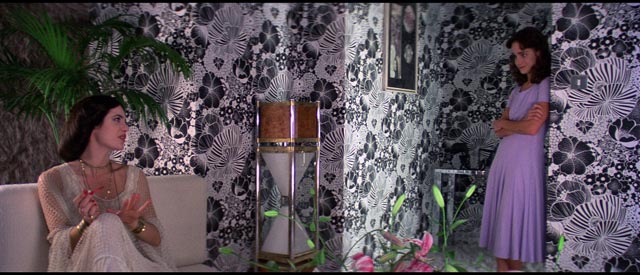
Suspiria & Tenebre (Dario Argento, 1977/1982)
Having recently subjected myself to Luca Guadagnino’s lugubrious remake of Suspiria, I went back to Dario Argento’s original for the first time in years (unless you count the recent Suspiria live concert with Claudio Simonetti’s Goblin back in December). The last time I watched the film at home was on Anchor Bay’s limited Edition DVD from 2001 (three disks, including a soundtrack CD), which for its time was pretty good although the technology couldn’t possibly replicate the amazingly rich image of the film I could remember so clearly from its original theatrical run. Cinematographer Luciano Tovoli had used Technicolor’s dye-transfer process to push the colour saturation to unusual extremes, lighting the film like Mario Bava at his most non-naturalistic best. Suspiria was conceived, and should be experienced, as a delirious hallucinatory fairy tale.
All that came back with the very first shots in the exquisite 4K restoration on Synapse’s 2018 Blu-ray. This disk is probably as close as you can get to the way the film looked projected from a new 35mm print. (Even other recent disk releases can’t compare – as is clearly demonstrated by the comparisons at DVD Beaver.) The super-saturated colours, the flowing camerawork, all propelled by Goblin’s ground-breaking prog rock score, connected perfectly with my memories of the theatrical experience.
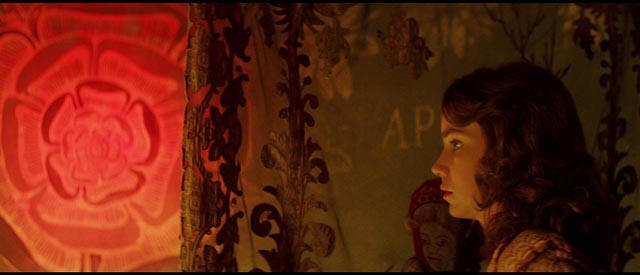
As I mentioned in my recent comments about the remake, this is not a film in which narrative is of primary importance; it’s a waking dream which slips from one unsettling moment to the next, building an atmosphere of supernatural dread through which its innocent protagonist drifts towards a primal encounter with a monstrous parent who must be defeated like the witch in a Grimm fairy tale. In other words, it’s not a story to follow through a series of plot points but rather a visual and emotional spectacle to become immersed in.
With my appreciation of Argento rekindled (I also recently saw Deep Red again for the first time in a while on Arrow’s Limited Edition Blu-ray, mastered from a 4K restoration), I immediately re-watched Tenebrae (Tenebre, 1982), also on Blu-ray from Synapse in a spectacular restoration. This film marked Argento’s return to the giallo after his diversion into the supernatural with Suspiria and Inferno (1980). While many consider Deep Red to be his giallo masterpiece, Tenebrae is a more pure representation of the genre and seems to me to be a more assured work (it doesn’t spend any time on awkward comic relief, for instance).
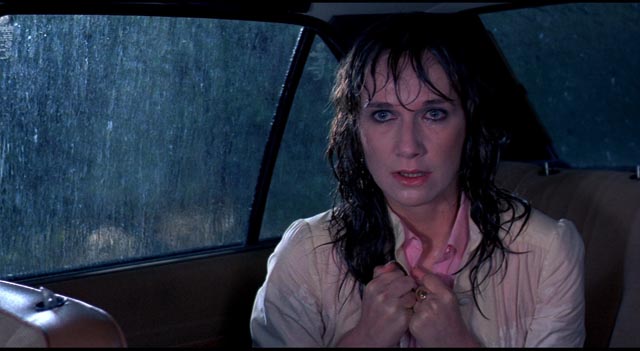
It is also structurally more playful, with its dual killers – or rather its secondary killer who kills the original killer and then continues the murderous work for his own reasons. In classic giallo form, there are flashbacks to an incident which lies behind the present crimes, although we only learn at the end whose memories these represent. (Argento injects an unsettling note of sexual ambiguity into these memories by casting transsexual actress Eva Robins as the erotic figure who humiliates the killer’s younger self.) While the murders are mostly conveyed conventionally through the killer’s point-of-view, at one celebrated moment Argento transforms that POV into something impossible, giving the killer a kind of godlike omniscience as the camera peers in through the windows of a house at night, then rises up to explore other windows on the second floor before drifting over the roof and down again to find the next victim going about her business obliviously inside. In any logical narrative sense, the shot is completely unmotivated – but as an expression of both the killer’s and the director’s power over the fictional world on-screen it’s both exhilarating and dreadful.
Although Argento went on to make a number of fine films (Phenomena [1985], Opera [1987], The Stendahl Syndrome [1996]) – among some much less than fine ones – none quite reached the creative level of Tenebrae. He did continue to work in the giallo genre, but that genre itself was almost played out by the time of Tenebrae and as a filmmaker Argento began to seem like someone whose time had already passed.
Both disks are packed with copious extras – audio commentaries, interviews, featurettes and, on the Tenebrae disk, a feature-length documentary by Calum Waddell from 2016, Yellow Fever: The Rise and Fall of the Giallo.
*
I’ve continued to catch up with other gialli and poliziotteschi since my recent trailer binge with Severin’s All the Colors of Giallo.
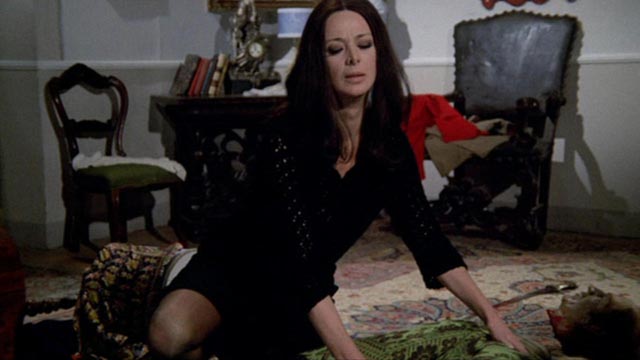
In the Folds of the Flesh (Sergio Bergonzelli, 1970)
I’ve never seen anything else by Sergio Bergonzelli, but here in 1970, just two months after the appearance of Argento’s The Bird with the Crystal Plumage, he’s already pushing the giallo to the kind of extremes more common in later movies. In the Folds of the Flesh (1970) is filled with family trauma, torture, murder, incest – even flashbacks to Nazi gas chambers. An escaped con sees a woman burying a dead body just before he’s recaptured by the police. The identity of the victim remains ambiguous, as does the identity of the killer – is the latter the woman herself or one of the children in the villa? Years later, with the kids grown, the now-released con returns with thoughts of blackmail. But he’s not the only man lurking around – and getting murdered by someone in the villa. Even when the narrative reaches a kind of resolution, you’re left with a feeling of manic invention which cares little for logic and is more interested in piling on transgressive ideas and images for their own sake.
*
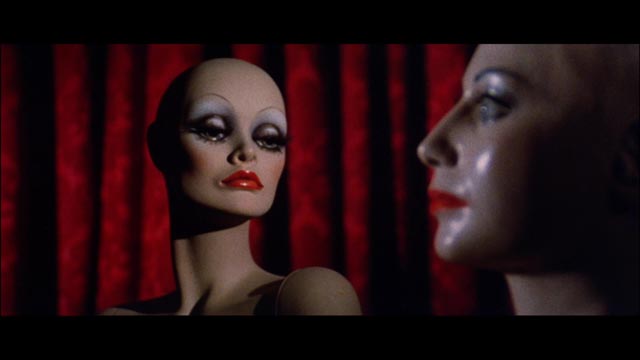
Spasmo (Umberto Lenzi, 1974)
Umberto Lenzi was already transitioning from gialli to poliziotteschi by 1974, when he made one of his most interesting movies in the former genre. Spasmo (1974) is full of misdirection and seemingly inexplicable images and incidents: a woman found on a beach apparently drowned, but actually still alive; murder victims littering the landscape who turn out to be mannequins; dead bodies which disappear and turn up later alive. The story hinges on two brothers and hereditary madness. We only learn towards the end that the supposed protagonist is actually a serial killer (the murders are shown in a flashback montage as he himself realizes what he has done), while the “dead” mannequins are the other brother’s way of deflecting his own madness into a relatively harmless channel.
*
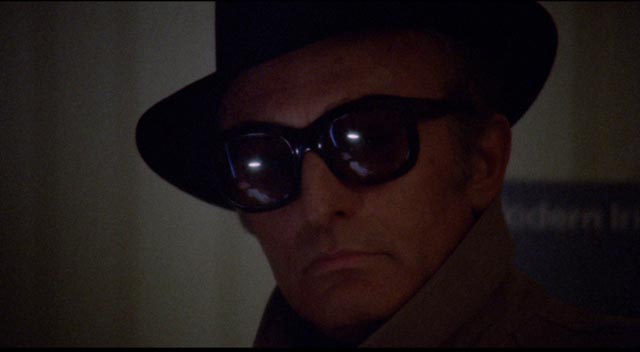
The Iguana with the Tongue of Fire
(Riccardo Freda, 1971)
By 1971, nearing the end of a three-decade career, Riccardo Freda was one of the grand old men of Italian commercial cinema. It was Freda who had pushed Mario Bava, a superlative cinematographer and visual effects technician, to take up directing in the late 1950s by walking away from I Vampiri (1957), the movie that launched Italy’s Gothic horror boom, and Caltiki, the Immortal Monster (1959), leaving Bava to finish both films. Freda was in his early 60s when he co-wrote and directed The Iguana with the Tongue of Fire (1971) – yet one more of the absurd “animal” titles which followed Argento’s debut feature.
Iguana is an interesting but clumsy movie – the narrative moves jerkily as if chunks have been left out, with scenes ending abruptly and jumping into the middle of something else with no clear sense of connection or temporal continuity. Someone is killing people by throwing acid in their faces and slicing them up with a razor and Freda casts suspicion on so many characters that it begins to seem like a parody of the genre. The first body (although unidentifiable) is the mistress of an ambassador who, citing diplomatic immunity, pointedly refuses to cooperate with the police. The Inspector (Arthur O’Sullivan) calls in an ex-cop (Luigi Pistilli), known for his brutal methods, to help solve the case. The ambassador has a daughter (Dagmar Lassander), who becomes involved with the cop, and a dissolute son (Werner Pochath), both of whom are inextricably involved in the ensuing series of murders (ultimately attributed to the killer’s conflicted identity as a gay man).
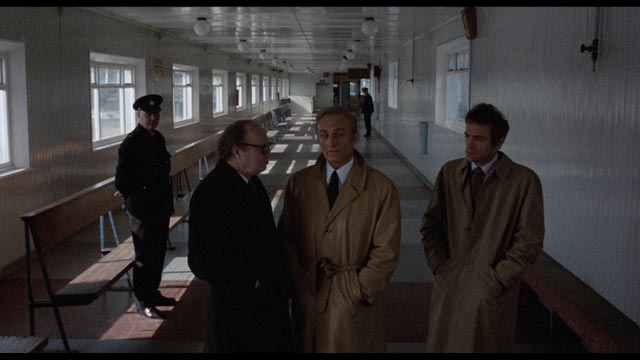
Although the film seems staid in comparison with what was being done at the time by younger directors, it has one unusual element which makes it stand out – it was shot largely on location in Dublin. While a number of gialli were shot outside of Italy – in France, Spain, England, even Australia – I think this may be the only once set in Ireland. And interestingly, as in Tenebrae, it turns out that there are two killers, the second inspired to act because of the crimes of the first. There are some decent performances – Anton Diffring as the ambassador, Valentina Cortese as his wife, O’Sullivan as a distinctly Irish policeman.
The film looks fine on Arrow’s Blu-ray, though Silvano Ippoliti’s photography isn’t particularly expressive or atmospheric. The disk is stacked with extras – a commentary plus almost two hours of interviews – which don’t make any effort to argue for it being a significant work, but rather just an entertaining potboiler.
*
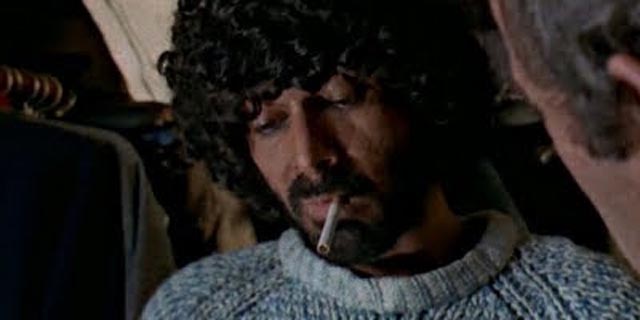
Destruction Force (Stelvio Massi, 1977)
I only know Stelvio Massi through a couple of poliziotteschi released on disk in 2005 by No Shame: Emergency Squad (1974) and The Last Round (1976). He seemed very proficient in the genre, staging action scenes well and keeping up the pace – an impression more than confirmed by Destruction Force (1977). When a vicious gangster from Sicily pulls some jobs up North, killing a lot of people – including a police chief – along the way, Commissario Ghini (Luc Merenda) is tasked with stopping him. The pace is fast, the action furious, and Massi’s style highly energized – the camera seldom rests, even in dialogue scenes, prowling around the characters, rushing through space, breathlessly propelling the narrative. Except, that is, for a number of scenes featuring Tomas Milian as reformed crook Monnezza.
These scenes, set in Monnezza’s grubby little restaurant (specialty: abusing the customers with offensive language), bring things to a virtual standstill. While Milian’s lengthy monologues to his infant son, strapped to his back as he works in the kitchen, go on far too long and several times become an irritating distraction from an otherwise very well-constructed story, there’s a reason for them being there. Milian had a contractual obligation to do one more movie for the producers so he insisted on creating his own character, writing his own dialogue (the character actually previously appeared in Umberto Lenzi’s Il trucido e lo sbirro [Tough Cop, 1976]), and perhaps because of his stature in the business he was allowed to inflate what was essentially a minor supporting role into something like a co-lead. Don’t get me wrong; Milian was an enormously charismatic actor and he injects humour and personality into the part – it’s just that these narrative asides grow out of all proportion and threaten to up-end what is otherwise a taut and exciting thriller.
*
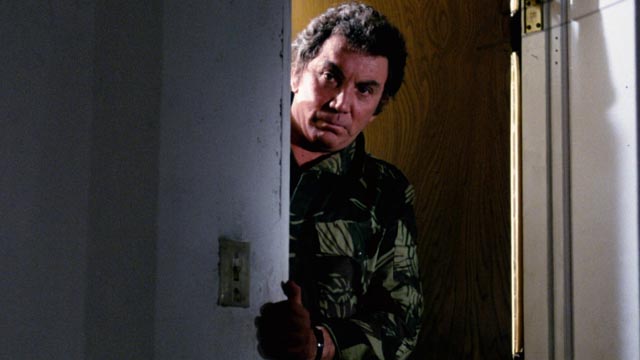
The Toolbox Murders (Dennis Donnelly, 1978)
I guess Dennis Donnelly’s infamous grindhouse movie The Toolbox Murders (1977) could be considered an American giallo. Banned in Britain as a “video nasty”, the movie pushes its sleazy story to extremes. A ski-masked man is killing women who live in a Los Angeles apartment complex, using various items from the heavy toolbox he hauls around – power drill, hammer, screwdriver, nailgun. There’s no mystery about who the perp is – hefty building owner Vance Kingsley (Cameron Mitchell, a long way from the fashion house of Mario Bava’s Blood and Black Lace), who has been driven to murderous religious mania by the death of his daughter in a car crash. In the midst of his murder spree, he kidnaps teenager Laurie Ballard (Pamelyn Ferdin, who earlier in the decade had been killed by Satanists in The Mephisto Waltz and had fed deadly mushrooms to Clint Eastwood in The Beguiled), whom he now sees as his lost daughter.
Laurie’s brother Joey (Nicholas Beauvy) goes looking for her, hooking up with Vance’s nephew Kent (Wesley Eure), who turns out to have inherited the family’s twisted genes, leading to revelations of incest and a bloody finale which leaves almost as many characters dead as the final scene of Hamlet. An unabashedly grubby movie, The Toolbox Murders delivers its exploitation shocks effectively.
The Blue Underground Blu-ray includes a commentary by producer Tony DiDio, DoP Gary Graver and actress Ferdin, plus an interview with nailgun victim Marianne Walter aka Kelly Nichols. Graver, by the way, has had an incredibly prolific career as a DoP and director, working under numerous pseudonyms in everything from low-budget exploitation in multiple genres to softcore to, head-spinningly, a number of projects with Orson Welles, including the posthumously completed feature The Other Side of the Wind (2018).
Comments